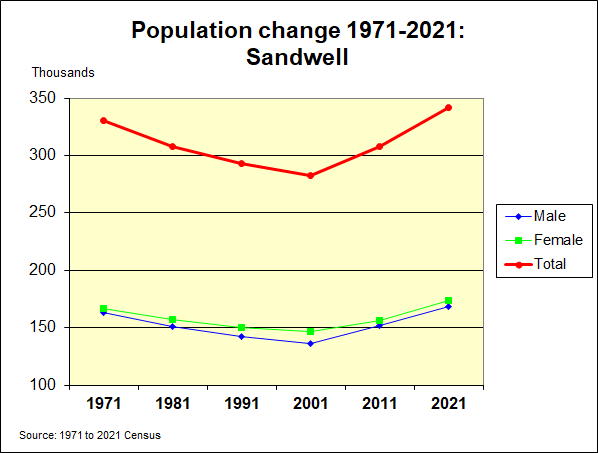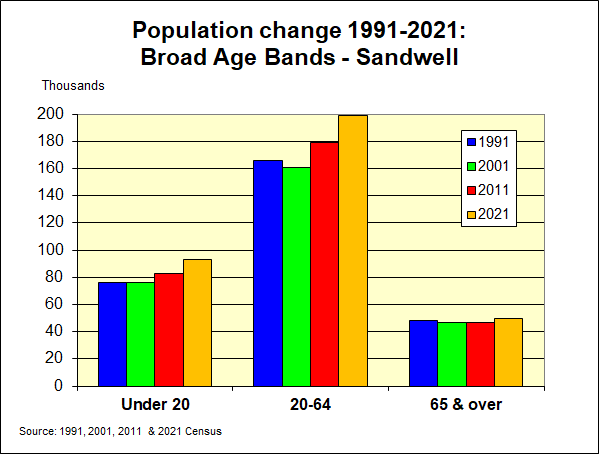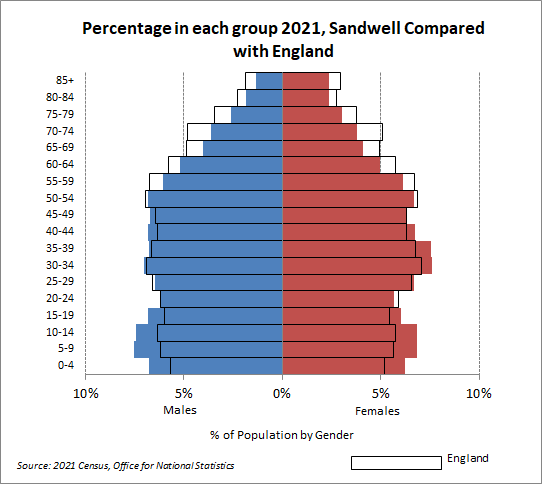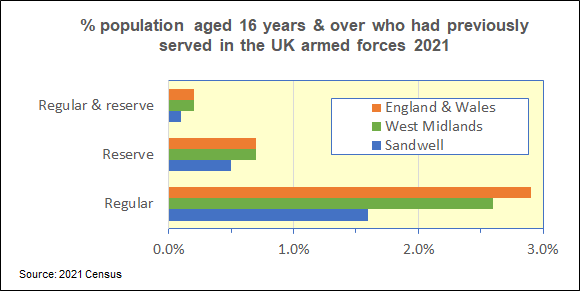Population Change
The 2021 Census estimates that Sandwell has 341,900 residents, a rise of 11.0% since 2011. This compares with a rise of 6.3% in England and Wales. The previous Census in 2011 saw a reverse of the declining population trend experienced since 1971. The latest Census sees the population of Sandwell growing to an even higher level than that in 1971.
There are now 130,200 households in Sandwell, compared to 121,500 in 2011 - a rise of 7.2%.
Population data by ward can be viewed here.


Population Structure
Sandwell’s population in terms of broad age bands is shown in this graph.
In terms of 5 year age-bands, the largest increases have been amongst those aged 55 to 59 (+34.2%) and 50 to 54 (+28.4%).
You can download the 2021 Sandwell & England data by age and gender here.
The pyramid shows the population structure of Sandwell in 2021, compared with England. As you can see, the population structure of Sandwell is much younger than England overall.

Gender Identity
Gender identity refers to a person’s sense of their own gender, whether male, female or another category such as non-binary. This may or may not be the same as their sex registered at birth.
The question on gender identity was new for Census 2021. It was added to provide the first official data on the size of the transgender population in England and Wales, and was a voluntary question asked of those aged 16 years and over. The question asked “Is the gender you identify with the same as your sex registered at birth?”.
Among those who answered “No” in Sandwell:
Sexual Orientation
Sexual orientation is an umbrella term covering sexual identity, attraction, and behaviour. For an individual respondent, these may not be the same. For example, someone in an opposite-sex relationship may also experience same-sex attraction, and vice versa. This means the statistics should be interpreted purely as showing how people responded to the question, rather than being about whom they are attracted to or their actual relationships.
The census question on sexual orientation was a voluntary question asked of those aged 16 years and over.

